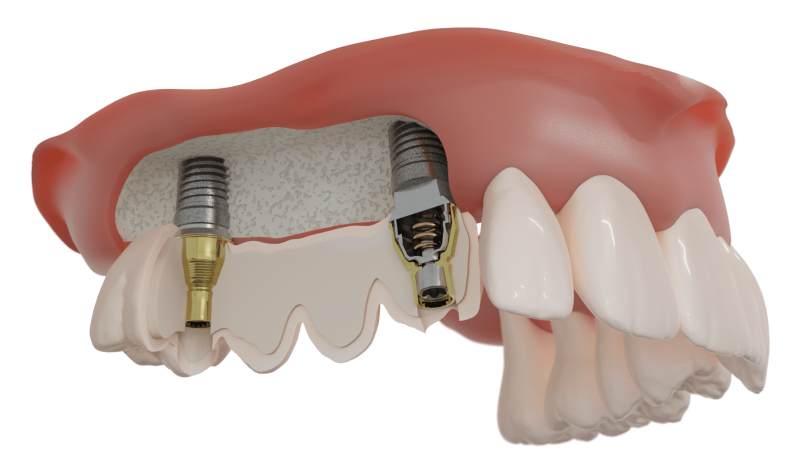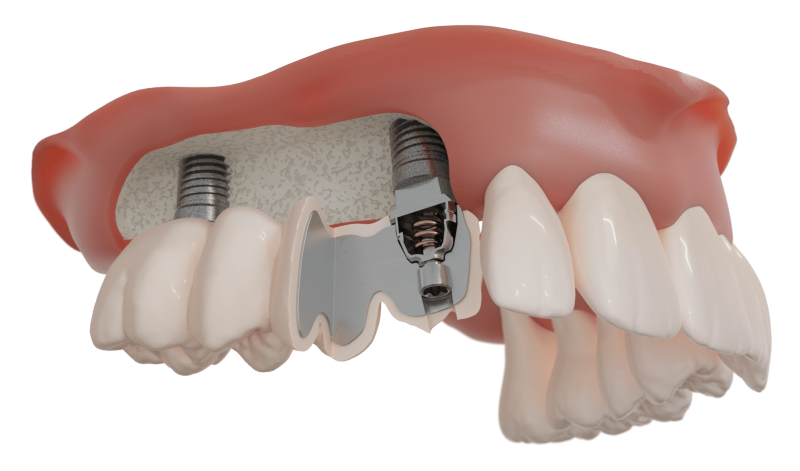Proscan is the distributer of the TSA abutment in the Benelux. www.proscan.be
Titanium Shock absorber
The natural, elastic environment of the mouth has always been the direct opposite of the rigidity of dental components; with all the resultant consequences. Until today!
With the Titanium Shock Absorber (TSA), Bonecare markets an innovative abutment for bridges that provides a natural mouth and chewing sensation for your patient. The very first biomechanical abutment in the world, resulting in added comfort for patient and practitioner.
Discover the product
PRINCIPLE
The human body is a dynamic entity. Introducing rigid
elements such as dental implants, may cause issues:
- Insensitive patients will bite down harder due to the absence of proprioception. This results in chipped porcelain, fractured structures, acrylic teeth, screws …
- Tension/stress in the jaw and/or joints
 Left: situation with a standard intermediary abutment. Right: the dynamic TSA abutment.
Left: situation with a standard intermediary abutment. Right: the dynamic TSA abutment.(Image from the Design report: Grove + More: Comparison between stresses developed in the TSA Abutment versus a rigid abutment by finite element analysis, 2016)
WHAT IS TSA?
TSA is the only dental abutment that biomechanically supports the natural chewing function. It simulates the functioning of the periodontal ligament and allows for a micromovement. In return, the patient will experience the implant-supported suprastructure as a natural given.
Features
SCREW-RETAINED
A fixed design of the top of the abutment, only for screw-retained constructions.
SUSTAINABLE
The spring allows the abutment to return to its original position every time.
UNIVERSAL
The variable base of the abutment connects to the implant and is available to be fitted to most conventional implant platforms and connections.
RESILIENCE / DYNAMICS
The abutment’s interior is completely filled with a layer of dental elastomer. This layer allows a micromovement of +- 20 micron.

GET THE MOST OUT OF THE TSA
Download BrochureWHY CHOOSE
THE TSA ABUTMENT?
MORE INFORMATION ABOUT THE USE OF BONECARE?
CONTACT US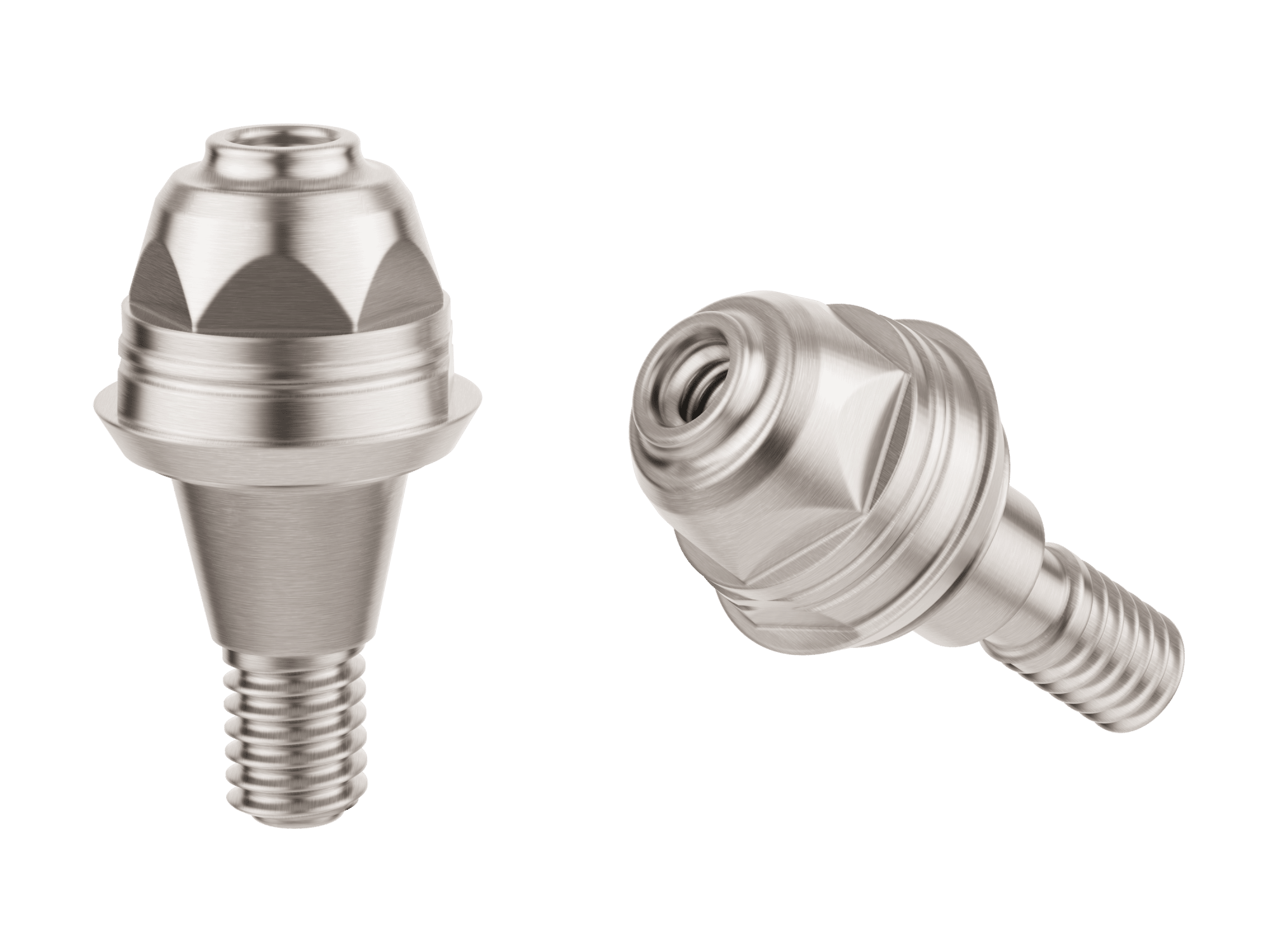
TSA bridgeworks: INDICATIONS
FREQUENTLY ASKED QUESTIONS
How can I obtain the Titanium Shock Absorber?
What are the dimensions of a TSA abutment?
The dimensions of the TSA abutment are:

What warranty conditions apply to a TSA abutment?
Bonecare grants a 10-year-warranty to a TSA abutment when used properly. The implant warranty is transferred from the manufacturer.
What is the maximum divergence between 2 implants in order to be able to use a TSA?
The maximum divergence between 2 implants in order to use a TSA is 20°.
Is there an angled TSA abutment?
There is no angled TSA abutment. With use of the digital database, however, it is possible to provide an angulated screw channel in the superstructure.
What is the benefit of working on abutment (TSA) level?
Some of the benefits of working on abutment level are: preservation of the biological seal at impression and installation of prosthetics, ease of use because the platform is placed at tissue level, cleanability …
What are the contraindications for TSA?
Contraindications are:
- Patients whose medical condition does not allow for dental implants.
- Patients under 18 years of age (treatment not advisable until bone formation is complete.)
- Patients for whom the number and position of the implants is not suitable.
- Patients who are allergic to Ti 6-AI 4V (90% titanium, 6% aluminium, 4% vanadium) and silicone.
- Cases that require a rigid construction (e.g., overly-sensitive gums).
- Cases where the divergence between the implants exceeds 20°.
- Patients with blood and cardiovascular diseases, peri-implantitis, periodontitis, decompensated diabetes, drug or alcohol abuse, chronic therapy with high doses of steroids, anticoagulant therapy, radiotherapy treatment.
Is it possible to sterilise a TSA?
The TSA abutment as well as the impression coping, interface and tools are supplied non-sterile and need to be sterilised before use with a patient. This requires the following procedure:
| Gravity Autoclave | Pre-Vacuum Autoclave | |
|---|---|---|
| Temperature | 134°C | 134°C |
| Exposure Time | 3 minutes | 30 minutes |
| Dry Time | 3 minutes | 20 minutes |
What is the required torque value to fix a TSA?
The torque value for the TSA abutment is indicated on the label of the packaging.
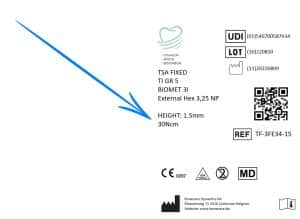
What is the interface height for TSA?
The height of the interface is 6.25mm. This can be taken into account in the height available for the prosthetic part.

Contact us
DO YOU HAVE A QUESTION FOR US?
Would you like more information about the different features or applications of the Bonecare Titanium Shock Absorber? Feel free to formulate your question on the adjacent form and we’ll contact you as soon as possible.
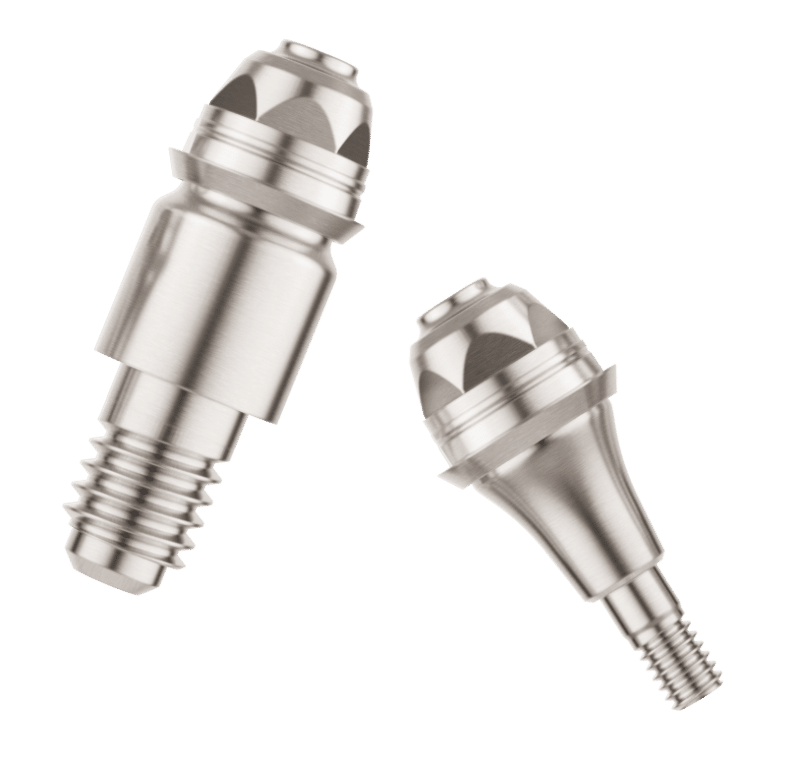
"*" indicates required fields

